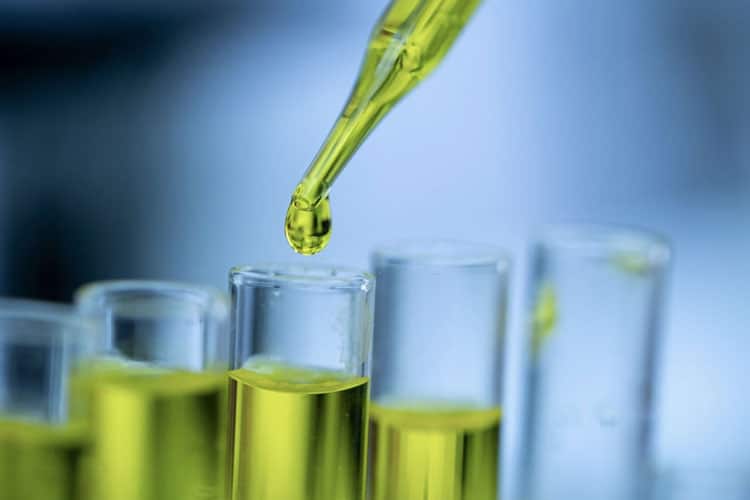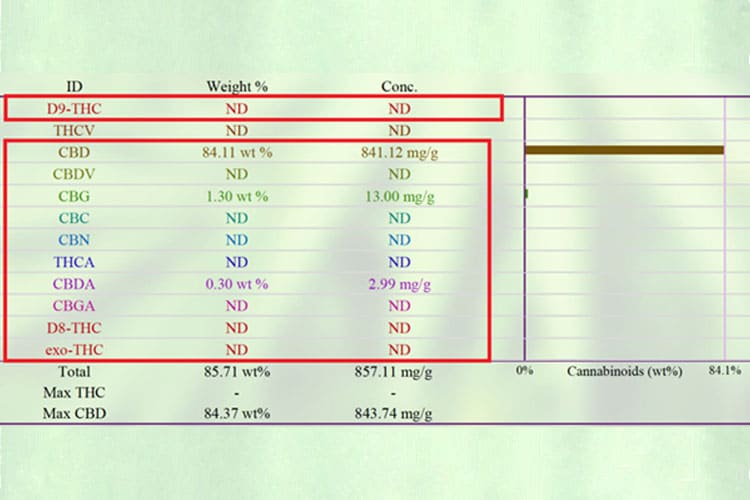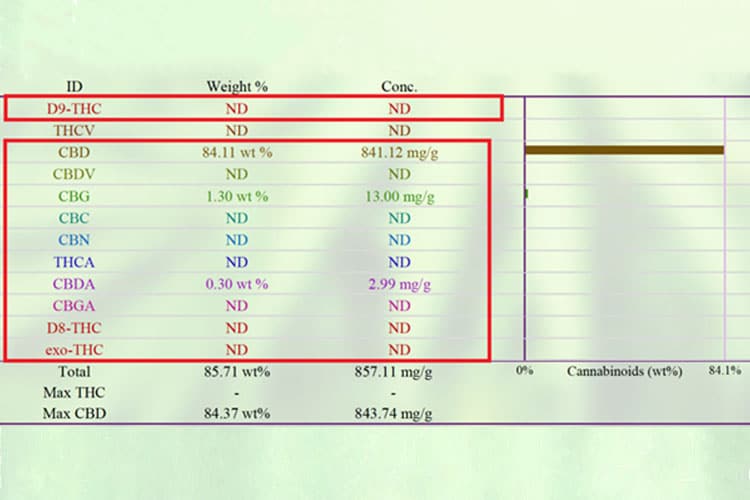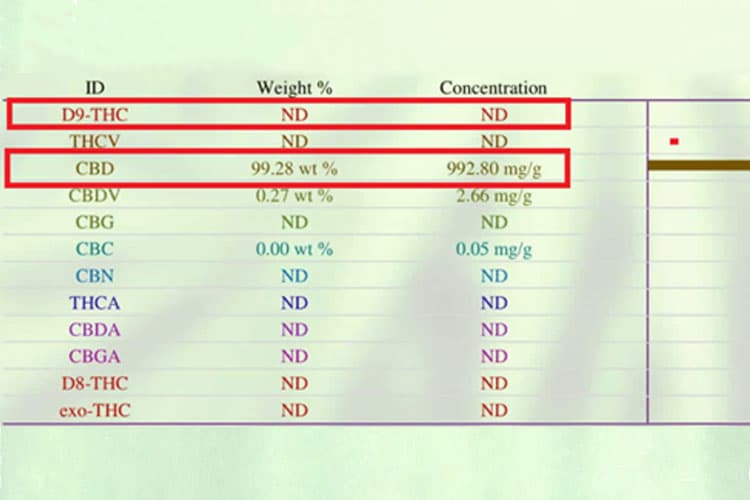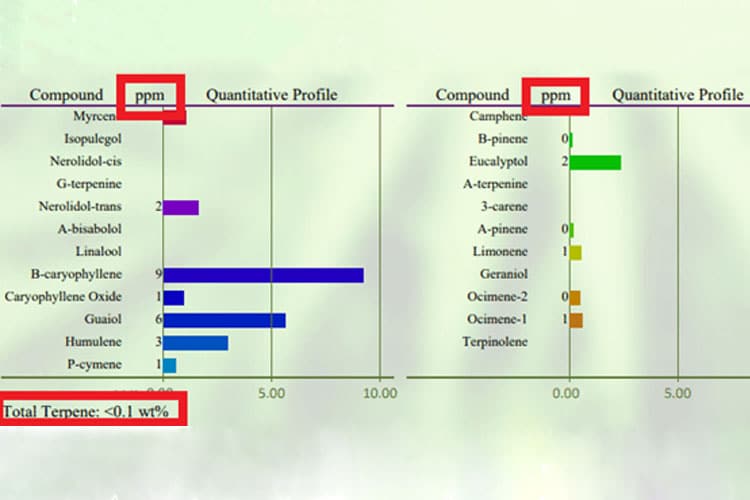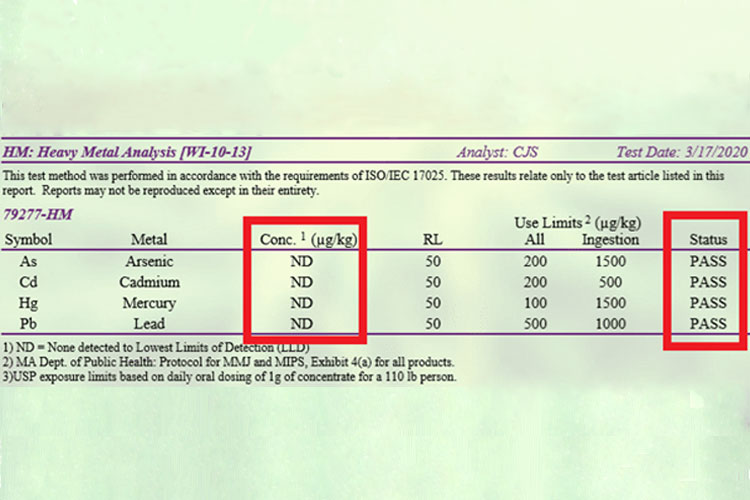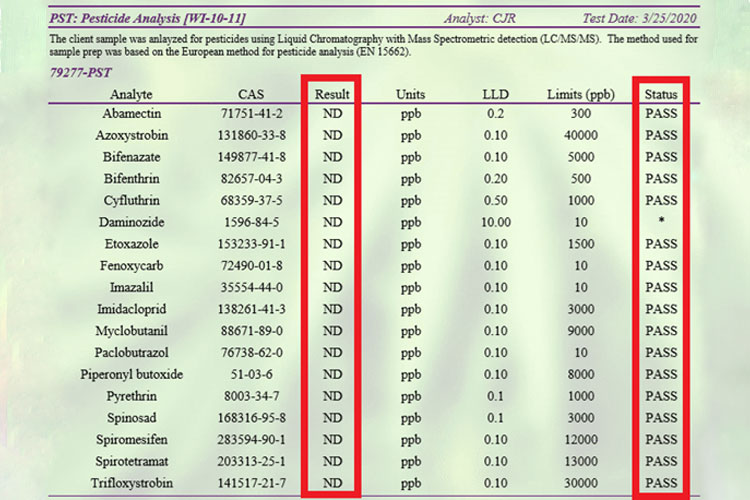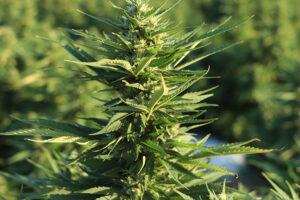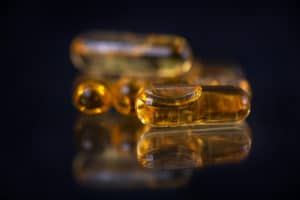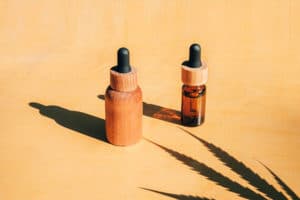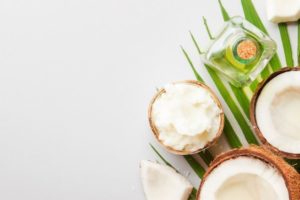The news about the benefits that CBD products have has spread like wildfire and so has its market. But, with the market being unregulated, there also has been a significant rise in ineffective, fake, bad quality, and even harmful CBD products. There is a huge chance that if you go to the market right now looking for a CBD product, you might land on something that is not safe for you. Now you might say, ‘hey, I’ll just read the label’, but it’s not that easy because the market for CBD products has been so unchecked that even the labels have inaccurate information. It’s terrifying, we know!
To relieve customers of this doubt and fear, respectable companies are now resorting to third-party testing, also known as the Certificate of Analysis (COA); you can think of it as a quality label that tells you what actually is in a CBD product- its potency, authenticity, accuracy, purity, everything. You can countercheck the manufacturer’s claim of what’s in the product, which is why these reports act as a tool to gauge the safety and quality of any CBD product and you must know how to use it.
That sounds like a great plan but reading lab reports can be often daunting for many. Reading a report and the numbers and words keep flying over your head? Don’t worry, we got you! In the article that follows we’re going to walk you through what exactly third-party testing means, how can you read the report, and how to tell if the report you have is legitimate.
The simplest answer to ‘are all CBD products available in the market are safe or not?’ is that they’re not. Given that CBD has numerous health benefits, it really is a puzzle why some of its products may be unsafe to use.
Although in 2018 hemp was legalized federally in the US, the FDA has failed to provide regulation to the hemp-based product industry and so it operates in a largely unregulated space. This has allowed the cannabis market to expand all across the world and CBD products are being sold without any barriers in the market or quality control.
The lack of oversight by the government has paved the way for many scams and low-quality products to be sold that are falsely advertised and might even be dangerous or injurious to health! Scary right?
But our intention here is not to scare you, rather educate you so you can make well-informed decisions and utilize the full potential benefits of CBD for your advantage. So, the question you should really be asking yourself is ‘how can you verify that the CBD based product you’re choosing for yourself is safe and pure?’ And the solution is CBD lab reports.
What Exactly is A Third-Party Lab Report Or Certificate of Analysis (COA)?
You can find a plethora of CBD based products in the market with varying qualities and ingredients. Reputable companies that sell top-notch CBD products are now using third-party lab testing to set their products apart from bogus replicas.
By sending their products to private, independent, and licensed testing laboratories, labs with which they have no affiliation, they are getting their products verified in terms of purity and CBD content. The reports, also called the Certificate of Analysis (COA), also confirm the presence of chemicals and microorganisms such as bacteria.
Companies that practice third-party testing label their products with the term so that they are easily recognizable by you. We hope this brings you some relief!
The Importance of Third-Party Lab Testing With CBD Products
Third-party lab testing of CBD products empowers you, as consumers, as it educates and enables you to verify the quality of every CBD product that you purchase. As the testing is done by an unrelated lab, the reports are unbiased which you can use as a tool to identify which products you should grab off the shelf.
The ‘third-party tested’ label also makes it easy for you to know who you can trust in a market full of substandard products; these labels have become a set industry-standard for quality brands in the CBD market. If interpreted correctly, these reports can help you differentiate between a potent, pure product and something that may not even have CBD at all.
What’s The Part Of Your CBD Product Being Tested?
The hemp-sourced extract is used as the base ingredient for all CBD based products available in the market. The extract can be processed in a variety of ways to make a broad-spectrum oil, full-spectrum oil or CBD molecule can be isolated by crystallizing it. A lab report focuses on the compounds derived from these different forms of extract.
During the processing of the extracts, it is possible for some molecules to contaminate them. The contaminants may be present because of growing the hemp plant in poor conditions or due to sub-par extraction. The part of the hemp plant used for the extraction also causes variation in the relative concentrations of CBD and terpene in the extract- both of which have therapeutic properties which we are so greedy for and are also the very compounds that labs test for, along with other harmful compounds such as heavy metals, pesticides, or mold.
Lab tests may be carried out on the hemp extract or the product itself and sometimes even on both. However, tests carried out on the extract are more effective because they may reveal compounds that are present in the slightest amounts which may be diluted during the processing of the final product.
Reading CBD Lab Reports
An extract may be tested in several ways and each test is carried out to detect a different compound. Below are tests that are most commonly performed on the extracts:
Cannabinoid Profile
Cannabinoids are compounds that are derived from the hemp plant; these are the compounds that are mainly responsible for the characterizing properties of cannabis. CBD and THC are the most commonly known cannabinoids; the former is responsible for therapeutic properties and medical benefits without giving someone the ‘high’ effect, whereas the latter has mostly only psychoactive properties. There are other less commonly known cannabinoids such as THCV, CBG, CBC, CBN, THCA, CBDA, and CBGA. Lab reports are carried out to determine the concentration of cannabinoids in a product, called cannabinoid profile that allows us to know the spectrum of a product.
A full-spectrum product contains a wide range of cannabinoids but less than 0.3% of THC:
A broad-spectrum product also contains a wide range of cannabinoids but it doesn’t contain any THC:
An isolate-based product contains 99% CBD so this is the purest form of CBD:
Key:
- ID: lists the scientific name of the cannabinoid that is being tested for
- Weight%: this is the percentage of the cannabinoid that is present in the extract. The raw oil has 99% cannabinoids and the rest is fatty acids or lipids. Isolates have more than 99% of cannabinoids but research suggests that it should not be used alone and the presence of fatty acids and terpenes makes them more effective and allows them to pass through the body more easily.
- Conc.: it is the exact concentration of the cannabinoid present in the extract
- ND: abbreviation for Non-Detectable
A full or broad-spectrum product may also show only CBD if the other cannabinoids were diluted during the processing or if the product was mislabelled either intentionally or unintentionally by the seller. So, there are two tells to confirm whether a product is full/broad-spectrum or an isolate: the first is the presence of a wide variety of terpene oils and the second is that the ingredient list will contain phytocannabinoid-rich or oil-based extracts.
A tincture or edible report should contain as much CBD content, or its close approximate, as advertised by the seller or labeled on the product.
Terpene Profile
Terpenes are the aromatic oils found naturally in cannabis and they are found to have synergistic benefits, relaxing features, and pain-relieving properties. A terpene profile tells us the concentration of these oils as parts per million (PPM) present in the product being tested. You can tell a product is full/broad-spectrum if it contains a wide range of terpene content because isolates do not contain any terpene oils.
Heavy Metals Screening
Heavy metal screening verifies the presence of any heavy metals in the extract such as arsenic, cadmium, mercury, and lead which must be in the allowable range mentioned in the report. A pass status means the extract is safe to consume but if the status says fail then you should not use it.
Pesticide Analysis
The report also tells us of the presence of any pesticides. Ideally, your product should not contain any pesticides because they are toxic and the status of all pesticides should state ‘pass’.
Microbiology Screening
This screening is used to check the status of any microbes like yeast, molds, E-coli, and salmonella that may contaminate the extract. Ideally, the report should detect none of these.
Mycotoxin Screening
Mycotoxins are toxic substances that are produced by fungi. The report should show no mycotoxins.
Solvent Residue Screening
Many solvents are used when processing the hemp plant to create extracts. These solvents should ideally not be present in a pure CBD product.
How Can I Tell If My CBD Lab Result Is Legitimate?
You can call the independent lab yourself, provide them the Certificate ID of the report and ask the lab whether the product was tested by them or not; they will be able o give you confirmation about the authenticity of the report.
If the report you are provided with says ‘In-House Test’ anywhere on it then the report will not be legitimate because third-party lab reports have a special marking on them that cannot be duplicated elsewhere.
Don’t Forget To Look at Product Labels Too!
Just because you see the third-party tested label on the product or on the website doesn’t mean you should blindly trust the company and not look at the lab reports and the labels.
These tests are carried out to make sure that the ingredients and their respective concentrations are consistent with the lab reports. It so verifies that the product contains the advertised information which ensures transparency. It is important that you counter-check so that you know what you’re ingesting as a consumer is safe.
Final Thoughts
Now that you’re all set and well-informed about CBD lab reports it is crucial for you to understand that you should always read then counter-check them with the product label as well to ensure you are getting the best, safe, high-quality CBD product for your money’s worth.
All the products mentioned here at Learning CBD Oil are third-party lab tested to ensure full transparency about the contents of our oil. And now that you’re empowered with the relevant knowledge, you can check relevant websites and look at lab results of any brand you choose. Want to explore some of the best brands in the market right now? Start shopping!
FAQs About CBD Lab Results
Question: How do you read full-spectrum CBD oil labels?
Answer: The label of a full-spectrum CBD oil should contain less than 0.3% THC, a wide variety of cannabinoids, terpenes, and phytocannabinoid-rich or oil-based extracts.
Question: How do you read the strength of CBD oil?
Answer: The ‘weightage’ column tells us the percentage of the cannabinoid that is present in the extract whereas the ‘concentration’ column tells us the exact concentration of CBD present in the oil.
Question: How do you measure CBD product quality?
Answer: You should look at third-party lab results and make sure that as a wide variety of cannabinoids are present, THC is less than 0.3%, terpenes are present, there are no pesticides, heavy metals, solvents, mycotoxins, or microbes present.
Question: Does CBD show up on a urinalysis test?
Answer:CBD does not show up in a urinalysis test.

